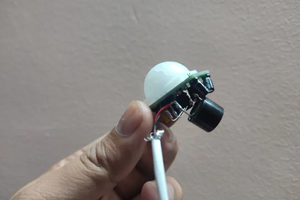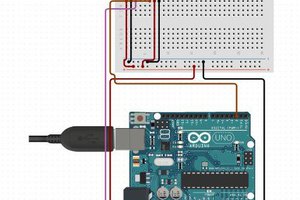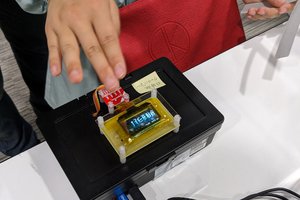Introduction
The main idea of this project is when any human, animals or any object come in the range of PIR motion sensor, the light in the room must glow automatically. This project can be used in smart room where automatic control of light is required. This circuit can also be implemented any where like staircase or front gate etc., and when the PIR sensor detects person movement it will triggers transistor and makes light glow.
This project can plays a important role in saving the electrical energy. A PIR Motion Sensor will automatically detect when someone enters the room to glow the light. After a few minutes(adjusted by your desires) if there is no movement detected, the lights will then automatically turned off.
PCB Manufacturer
This project is sponsored by PCBWAY. It is world fastest pcb manufacturing company.
You Will get FREE prototype pcb from PCBWAY. So do not be late to register and place your first order from PCBWAY
If you want to order pcb from PCBWAY . CLICK IN THE LINK BELOW:

| SN | COMPONENTS NAME | DESCRIPTION | QUANTITY | |
|---|---|---|---|---|
| 1 | BC547 | NPN transistor | 1 | https://amzn.to/3R8QvNA |
| 2 | SCHR501 | PIR motion sensor | 1 | https://amzn.to/3aenmQD |
| 3 | Power Adapter | 12 volt | 1 | https://amzn.to/3ukyMt8 |
| 4 | Led Strip | 12 volt | 1 | https://amzn.to/3yg72Xp |
PIR Motion Sensor
A passive infrared sensor is an electronic sensor that measures infrared light radiating from objects in its field of view. This type of motion sensor is only the receptor of infrared waves and does not release any infrared beam so they are called passive infrared sensor.

Working Principle of PIR motion sensor
All the living beings emits infrared radiation to surrounding. Warmer the object more will be the infrared emission.
The Passive Infrared sensor is a thermal infrared sensor that detects the motion of objects by these infrared radiations variations in environment.
The sensor has two or more equal slots made up of Pyroelectric material that is very sensitive to Infrared. When there are no object in the sensor range, both its slots sense the same amount of Infrared radiations.
When a warm body comes in the range of the PIR motion sensor, it passes through both the slots one after the other. The moment it intercepts the first half of the sensor, a positive differential change is caused between the two halves. Similarly, when it leaves the detection area a negative differential change occurs between both the slots. These changes in the pulses are the indication to the sensor that there is some motion in its detecting zone.

Modes and Adjustment of PIR Sensor Light

Modes

Normal Modes
When the Passive infrared sensor detects motion, it sets the output to High until a certain predefined time by Potentiometer. This mode is independent of the movements during the output HIGH time. In the figure above, t1 is first motion detected. The output go high when the first motion is detected. t2 and t3 are second and third motion detected but in this case the output is not set high as it falls in delay interval. After the output is set for some predefined time there is fix delay. This mode is also independent of the movements during this fixed delay time. The output is set high for the fourth motion (t4) but the output is not high for t5 as it fall in fix delay time.
Re-Triggering Mode
In this mode when the PIR sensor detects motion, it sets the output to High until a set adjusted time but if it detects motion during its output High state 1, it again triggers the sensor to increase the output high period of the sensor.
In re-triggering mode, t6 is the first motion detected. t7 does not trigger the sensor because it is within the fixed delay interval. t9, t10, t11, which occurs after t8 triggers the sensor, extend the time delay since they occurred within the adjusted delay interval.
 electronicsworkshops
electronicsworkshops
 Michael O'Toole
Michael O'Toole

 hIOTron
hIOTron
 Takahiro
Takahiro